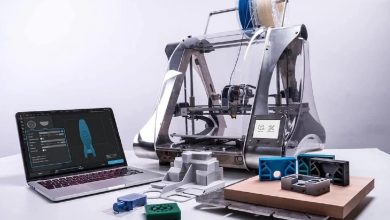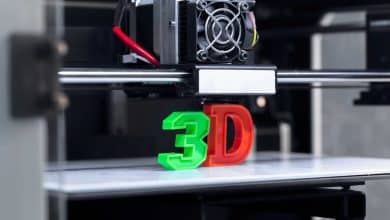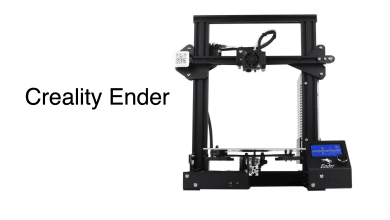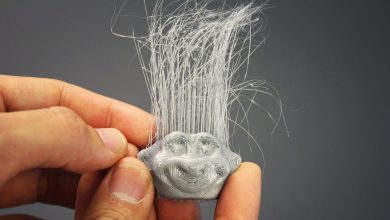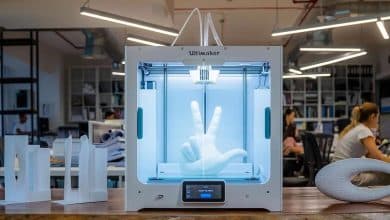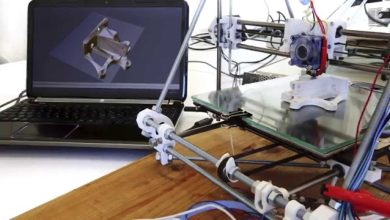As 3D printing technology continues to evolve, it’s opening up a world of possibilities for creators and entrepreneurs alike. This technology enables the production of a wide array of items, from functional products to unique artistic creations. One platform that stands out in the 3D printing community is Thingiverse, a vast digital repository teeming with diverse 3D models. But one question that commonly arises is, “Can I sell 3D printed items from Thingiverse?” This article aims to provide a comprehensive answer to this question, unraveling the complexities of intellectual property rights, licenses, and the ins and outs of the 3D printing business.
Entering the world of 3D printing and selling involves more than just owning a 3D printer and downloading models from the internet. There are legal aspects to consider, such as copyright law and licensing agreements. Equally important is the business side of things—identifying a profitable niche, setting up an online shop, marketing your products, and providing excellent customer service. Whether you’re a 3D printing hobbyist curious about monetizing your passion or an entrepreneur exploring innovative business opportunities, this article provides a detailed overview of what you need to know.
Key Takeaways
- Selling 3D printed items from Thingiverse is not always permissible due to copyright laws and licensing agreements.
- It is crucial to understand the type of license a 3D model has before deciding to sell prints of it.
- There are legal consequences for selling copyrighted 3D models without proper permission.
- Diversified platforms exist to sell 3D printed items or 3D models, including Etsy, CGTrader, Cults3D, and Amazon.
- Starting a 3D printing business requires not only 3D printing skills and equipment but also a comprehensive business strategy.
Can I Sell 3D Printed Items from Thingiverse?
Thingiverse, the go-to platform for discovering and sharing 3D printable designs, is a universe teeming with creative 3D printing enthusiasts. However, you may have asked yourself, “Can I sell 3D printed items from Thingiverse?” This question is not as straightforward as it might seem. In fact, the answer depends on multiple factors, including licensing agreements, copyright laws, and ethical considerations.
To help navigate these complexities, this comprehensive guide will delve into the world of Thingiverse, exploring its legal and ethical dimensions and offering practical tips for selling 3D printed items.
Thingiverse and 3D Printing: A Brief Overview
Before diving into the legalities, let’s understand what Thingiverse is and how it functions.
Thingiverse, owned by MakerBot Industries, is the largest 3D printing community where users share, create, and modify 3D models for 3D printing. It hosts a myriad of user-created designs that can be downloaded and printed by anyone. The platform spans various categories such as art, gadgets, tools, and even complex pieces of machinery.
However, all content shared on Thingiverse is subject to certain licensing agreements, which brings us to the crux of our discussion.
Understanding Thingiverse’s Licensing Agreements
Thingiverse users agree to the site’s terms and conditions when they create an account and upload their designs. These terms include a licensing agreement that specifies how others can use the shared designs.
To make things easier, Thingiverse adopts the Creative Commons (CC) licensing model, which is broken down into several categories:
- CC BY: This license allows others to distribute, remix, adapt, and build upon your work, even commercially, as long as they credit you for the original creation. This is the most accommodating of the licenses offered.
- CC BY-SA: This license allows others to remix, adapt, and build upon your work even for commercial purposes, as long as they credit you and license their new creations under the identical terms.
- CC BY-NC: This license allows others to remix, adapt, and build upon your work non-commercially, and although their new works must also acknowledge you and be non-commercial, they don’t have to license their derivative works on the same terms.
- CC BY-NC-SA: This license lets others remix, adapt, and build upon your work non-commercially, as long as they credit you and license their new creations under the identical terms.
Each design uploaded to Thingiverse has an associated CC license that dictates how it can be used. Therefore, to answer the question “Can I sell 3D printed items from Thingiverse?”, one must first check the license attached to each design.
Selling 3D Printed Items: Legal and Ethical Considerations
When you sell 3D printed items from Thingiverse, it’s important to consider not only the legal implications but also the ethical ones.
Legal Considerations
As per Thingiverse’s terms of use, designs under CC BY and CC BY-SA licenses can be used commercially. However, those under the CC BY-NC and CC BY-NC-SA licenses can only be used non-commercially. Violating these terms could lead to copyright infringement issues. Thus, always check the license before using a design commercially.
Also, bear in mind that licensing is subject to change. A designer can modify the license of their design at any time, which could affect your ability to sell prints of that design.
Ethical Considerations
Even if a design is under a license that allows commercial use, consider contacting the original designer to get their permission before selling prints of their work. This is a sign of respect for their creative effort and can prevent misunderstandings.
Moreover, always give credit where credit is due. This can be as simple as mentioning the original designer in your product listings or on your website.
Practical Tips for Selling 3D Printed Items from Thingiverse
If you’re planning to sell 3D printed items from Thingiverse, here are a few practical tips:
- Study the License: Always check the license before you start printing a design for sale.
- Get Permission: Even if a design is under a commercial-use license, consider contacting the designer for permission. It’s the ethical thing to do.
- Credit the Designer: Always credit the designer in your product listings.
- Stay Updated: Keep an eye on the licensing status of the designs you use. Licenses can change, and you need to be aware of it.
- Build a Portfolio: Try to create a diverse portfolio of designs. This not only minimizes risk but also attracts a broader customer base.
- Focus on Quality: Ensure your 3D prints are of high quality. This will set you apart from the competition and make customers more likely to buy from you.
So, can you sell 3D printed items from Thingiverse? The answer is yes, but it’s essential to navigate the fine line between legality and ethics carefully. With due diligence and respect for designers’ work, you can turn your 3D printing hobby into a profitable venture.
Considerations Before Starting a 3D Printing Business
Before setting out to sell 3D printed items from Thingiverse, it’s crucial to take some preparatory steps:
- Understand the Market: Identify your potential customers and understand their needs. Are they looking for decorative items, functional tools, or customized gadgets? Knowing your target market can help you select the right designs to print.
- Choose the Right 3D Printer: The quality of your prints depends significantly on your 3D printer. Different printers are designed for various materials and levels of detail, so choose one that best suits your business needs.
- Select the Right Material: The material you use for printing can drastically affect the look, feel, and functionality of your items. Research various materials such as PLA, ABS, PETG, and TPU to understand their properties and suitability for different applications.
- Master Post-Processing: The process doesn’t stop when your item is printed. Post-processing techniques like sanding, painting, or gluing can enhance your products and make them more appealing to customers.
- Set Competitive Prices: Determine a fair price for your items. Consider the cost of materials, electricity, printer wear and tear, your time, and any licenses or permissions you may need.
- Create a Business Plan: Outline your business strategy, including marketing and sales channels, pricing, customer service, and growth plans.
How to Promote Your 3D Printing Business
Once you’re ready to sell 3D printed items from Thingiverse, you’ll need to attract customers. Here are a few ways to promote your business:
- Create a Website: A professional website showcases your products and provides information about your business. Include a shopping cart for customers to make purchases directly.
- Use Social Media: Platforms like Instagram, Facebook, and Twitter are excellent for showcasing your products and connecting with potential customers. You can share images of your 3D printed items, offer promotions, and engage with your followers.
- Join 3D Printing Communities: Participate in forums and communities like Reddit’s r/3Dprinting, where you can share your work, ask for advice, and connect with other enthusiasts.
- Attend Maker Fairs: Maker Fairs and similar events provide a platform to display your products, network with other makers, and engage directly with potential customers.
Remember, selling 3D printed items from Thingiverse is more than just a business; it’s a commitment to honoring the hard work and creativity of designers. As long as you navigate the space with respect for these creatives, there’s no limit to what you can achieve in the 3D printing marketplace.
FAQ: Can I Sell 3D Printed Items from Thingiverse?
1. Can I 3D print anything and sell it?
Not everything you 3D print can be sold legally. The crucial factor is whether the item you’ve printed is protected by copyright, trademark, or patent law. If the design is protected, selling the item without permission from the rights holder could result in legal action.
2. Can I sell 3D printed items from CGTrader?
CGTrader, like Thingiverse, allows designers to share their 3D models with the public. However, before selling 3D printed items from CGTrader, you must review the license associated with each model. Some models are available for commercial use, while others are for personal use only. Always respect the designers’ licensing terms.
3. Can I sell 3D printed items from Cults3D?
Cults3D is another platform for sharing and selling 3D designs. Just like Thingiverse and CGTrader, you need to pay close attention to the licensing terms of the models. If a model is marked for non-commercial use, you cannot sell prints of that model without obtaining permission from the designer.
4. Can I sell 3D printed items on Etsy?
Yes, you can sell 3D printed items on Etsy. However, you should make sure you have the rights or permission to sell any designs that are not your own. It is always best to sell your own designs or those for which you have acquired commercial licenses.
5. Can I sell 3D printed Lithophanes?
Yes, 3D printed lithophanes can be sold, provided the images used to create the lithophane are not copyrighted, or you have obtained the necessary permissions. Remember, copyrighted material includes most images found on the internet, so use free-to-use images or create your own.
6. Can you make a business out of 3D printing?
Absolutely, many entrepreneurs have turned 3D printing into successful businesses. This includes offering 3D printing services, selling 3D printed products, providing 3D modeling services, and selling 3D printers or materials. As with any business, success requires a strong understanding of the market and a solid business plan.
7. Can you make a living as a 3D artist?
3D artists can make a living by offering a variety of services, including 3D modeling, animation, and visual effects for industries such as gaming, film, architecture, and product design. They can also sell their own 3D designs or prints, teach 3D design classes, or work for a company that utilizes 3D technology.
8. Can you make a living selling 3D models?
Selling 3D models can be a lucrative business if you have the right skills and strategies. This might involve selling your models on platforms like CGTrader, Cults3D, or Turbosquid. The key is creating high-quality, unique models that cater to the needs of your target market.
9. Can you make passive income with 3D printing?
Yes, 3D printing can be a source of passive income. For example, you can create and sell digital 3D models online, earning royalties each time your design is downloaded. Alternatively, you can sell 3D printed items on platforms like Etsy or Amazon. Keep in mind, though, that these ventures do require upfront work to create the models or items.
10. Can you paint 3D printed items?
Yes, you can paint 3D printed items. The process typically involves sanding the print to achieve a smooth surface, applying a primer to ensure the paint adheres correctly, and then using acrylic paint to add color.
11. Can you sell 3D models as NFTs?
Yes, you can sell 3D models as NFTs (Non-Fungible Tokens). NFTs are unique digital assets stored on the blockchain. By tokenizing 3D models as NFTs, artists can sell their work directly to buyers, retaining copyright and ensuring their work cannot be duplicated.
12. Can you sell 3D models of copyrighted material?
Selling 3D models of copyrighted material without permission from the rights holder is illegal and could result in legal action. This includes characters from popular films, video games, and branded products.
13. Can you sell 3D models on Amazon?
Amazon does not directly support the sale of 3D models, but you can sell 3D printed items on Amazon. If you want to sell 3D models, consider platforms specifically designed for this, such as CGTrader or Turbosquid.
14. Can you sell 3D printed items on Etsy?
Yes, Etsy is a popular platform for selling 3D printed items. It’s perfect for selling unique, handmade, or customized items, which fits well with 3D printing. Ensure you follow Etsy’s guidelines and only sell items you have the rights to.
15. Can you sell STL files on Thingiverse?
As of my knowledge cutoff in September 2021, Thingiverse did not support selling models directly on their platform. Thingiverse is primarily a platform for sharing free models. For selling STL files, consider platforms like CGTrader, Cults3D, or Turbosquid.
16. Can you trademark 3D models?
Trademark law typically applies to logos and brand names. However, you might be able to register a design patent for a 3D model if it’s a unique, non-functional design. Consult a legal professional to understand the best protection for your work.
17. Do 3D modelers make a lot of money?
The income of a 3D modeler can vary widely based on factors such as location, experience, specialization, and whether they’re freelance or employed by a company. On average, a 3D modeler can make a decent income, but like any profession, it takes time and skill to reach a high earning level.
18. How can I sell 3D printed items?
You can sell 3D printed items on various online platforms such as Etsy, eBay, and Amazon. You can also sell at local craft fairs or in physical stores that sell similar products. Remember to price your items appropriately, considering material costs, time, equipment wear and tear, and any licensing fees.
19. How do you start making money with 3D?
To start making money with 3D, you can sell 3D printed items, offer 3D printing or 3D modeling services, sell digital 3D models, or teach 3D modeling or printing. Always consider the market demand, your expertise, and the legal implications of selling prints or designs.
20. How hard is it to learn 3D printing?
Learning to 3D print can be straightforward with the wide array of resources available online. However, mastering it, like any skill, takes time and practice. You’ll need to understand 3D modeling, the printing process, the different types of materials, and how to troubleshoot common issues.
21. How much can you make a month with a 3D printer?
The amount you can make in a month with a 3D printer depends on factors such as the type of items you’re printing, the demand for these items, your pricing strategy, and the time you dedicate to your business. Some entrepreneurs make a substantial income, while others earn a smaller amount as a side income.
22. How much can you make from Cults3D?
Cults3D allows designers to sell their 3D models on the platform. Your income from Cults3D will depend on the quality of your designs, the price you set, and the demand for your models.
23. How much does an STL file cost?
The cost of an STL file varies based on the complexity of the design and the designer’s pricing strategy. Some designers offer their models for free, while others might charge anywhere from a few dollars to a few hundred dollars.
24. How much does it cost to build a house with a 3D printer?
The cost to build a house with a 3D printer varies widely based on factors such as the size and complexity of the house, the type of materials used, and the cost of the 3D printing technology. However, 3D printed houses are generally considered more cost-effective than traditional construction methods.
25. How much does it cost to make 3D printed items?
The cost to make a 3D printed item includes the cost of the 3D printer, the material used for printing, the electricity consumed during the printing process, and the cost of any post-processing steps. Additionally, if you’re printing a design that is not your own, you may need to pay for a commercial license.
26. How much is the average 3D printer?
The cost of a 3D printer varies widely based on its capabilities. As of my knowledge cutoff in September 2021, a beginner-friendly desktop 3D printer could cost around $200 to $500, while high-end professional printers can cost several thousand dollars.
27. How to make money selling STL files?
To make money selling STL files, you need to create high-quality, unique designs that meet a demand in the market. You can sell your files on platforms like CGTrader, Cults3D, or Turbosquid. It’s also essential to promote your work effectively to reach potential customers.
28. How to sell 3D printed models online?
You can sell 3D printed models online through platforms like Etsy, Amazon, or eBay. You could also sell directly through your own website. Be sure to present your products professionally with high-quality photos and detailed descriptions.
29. How to start a 3D printing business from home?
Starting a 3D printing business from home involves several steps: developing your skills, understanding the market, identifying your niche, purchasing the necessary equipment, creating or sourcing designs, setting your prices, and promoting your business. It’s also important to understand the legal aspects of selling 3D printed items.
30. How valuable is 3D printing?
3D printing is highly valuable in various industries and applications. It enables rapid prototyping, custom manufacturing, reduced waste, and complex designs that aren’t possible with traditional manufacturing methods. Its value continues to grow as technology advances and new applications are discovered.
31. Is 3D printing a viable side hustle?
3D printing can indeed be a viable side hustle. Many people earn extra income by selling 3D printed items, offering 3D printing services, or teaching others about 3D printing. However, like any side hustle, it requires time, skill, and dedication.
32. Is 3D printing copyright infringement?
3D printing can lead to copyright infringement if you print and sell designs that are protected by copyright without the rights holder’s permission. To avoid infringement, only print designs that are in the public domain, that you have created yourself, or for which you have obtained a commercial license.
33. Is it a good idea to start a 3D printing business?
Starting a 3D printing business can be a great idea if you have the skills and understand the market. The 3D printing industry is growing, and there are many opportunities for entrepreneurship, from selling prints or designs to offering printing services or teaching.
34. Is it illegal to sell Pokemon 3D prints?
Pokemon characters are protected by copyright. Therefore, selling 3D prints of Pokemon characters without permission from the copyright holder is illegal and could result in legal action.
35. Is it illegal to sell prints off of Thingiverse?
Selling prints of designs from Thingiverse without the necessary permissions is illegal. Designs are often marked as “non-commercial use only,” meaning you cannot sell prints of them without obtaining a commercial license from the designer.
36. Is it illegal to sell things from Thingiverse?
Many designs on Thingiverse are licensed for non-commercial use only, meaning it would be illegal to sell prints of these designs without the designer’s permission. Always review the license terms of a design before selling prints of it.
37. Is it legal to sell products I 3D print from a file I downloaded online?
Whether it’s legal to sell 3D prints from a file you downloaded online depends on the license of the design. If the design is marked for non-commercial use or is copyrighted, you cannot sell prints of it without the rights holder’s permission.
38. Is it profitable to sell 3D prints?
Selling 3D prints can be profitable, depending on factors like the demand for your products, your pricing strategy, and your production costs. Unique, high-quality prints that can’t be found elsewhere are often more profitable.
39. What 3D model sells the most?
The types of 3D models that sell the most can vary widely based on current trends and the platform on which you’re selling. However, popular categories often include household items, game assets, architectural models, and educational tools.
40. What can you 3D print and sell on Amazon?
You can sell many types of 3D printed items on Amazon, including home decor, jewelry, toys, and gadgets. However, you must ensure that you have the right to sell any designs that are not your own, and you must comply with Amazon’s seller policies.
41. What do you need for a 3D printing business?
To start a 3D printing business, you’ll need a 3D printer, printing materials, design software, and skills in 3D modeling and printing. You’ll also need a clear understanding of your target market, a business plan, and a strategy for marketing and selling your products or services.
42. What is one of the dangers of 3D printing?
One danger of 3D printing is the potential for copyright infringement if you print and sell designs without the rights holder’s permission. Other risks include physical hazards, like burns from hot printers or inhalation of fumes from certain printing materials.
43. What is the most profitable 3D printing business?
The most profitable 3D printing business varies based on factors such as your skills, market demand, and business strategy. However, profitable avenues can include selling unique, high-quality 3D printed items, providing professional 3D printing services, or selling premium 3D designs.
44. What is the profit margin on 3D printing?
The profit margin on 3D printing depends on various factors, including the cost of your materials and equipment, the time involved in designing and printing, and the price you’re able to get for your printed items. Some sellers report profit margins of 50% or more, but this can vary widely.
45. What is the unique selling point of 3D printing?
3D printing’s unique selling points include the ability to produce customized and complex designs, rapid prototyping, reduced waste compared to traditional manufacturing methods, and the potential for localized production, reducing the need for shipping.
46. What retail companies use 3D printing?
Many retail companies use 3D printing in various ways. For example, IKEA uses 3D printing to prototype new furniture designs, Nike uses it to prototype and manufacture some of its shoes, and many jewelry retailers use 3D printing to create custom designs.
47. What things are illegal to 3D print?
It’s illegal to 3D print items that infringe on copyright, such as protected characters or brand logos, without permission from the rights holder. It’s also illegal to 3D print weapons in many jurisdictions.
48. Where can I sell my STL files?
You can sell your STL files on platforms like CGTrader, Cults3D, or Turbosquid. These platforms allow designers to list their models for sale and earn a commission on each sale.
49. Where to sell 3D models for Metaverse?
Platforms like Decentraland and OpenSea allow you to sell 3D models for use in the Metaverse. These platforms often use blockchain technology, and transactions are usually made with cryptocurrency.
50. Why is 3D printing illegal?
3D printing itself is not illegal. However, certain uses of 3D printing can be illegal, such as printing copyrighted designs without permission, printing counterfeit products, or printing weapons. Always ensure that your use of 3D printing complies with all applicable laws and regulations.
Conclusion
3D printing offers remarkable opportunities for creativity and entrepreneurship. However, the journey of selling 3D printed items—especially those downloaded from platforms like Thingiverse—comes with its own set of challenges and considerations. Key among them is the respect for intellectual property rights and adherence to licensing agreements. Making money from 3D printing isn’t just about the manufacturing process—it’s about understanding the legal landscape, identifying market needs, providing quality products, and navigating the ecommerce space effectively.
The world of 3D printing is vibrant and rapidly expanding. As you venture into selling 3D printed items or 3D models, keep yourself informed and updated about the ever-evolving technology, market trends, and legalities. This way, you can foster a profitable and sustainable business while staying on the right side of the law. Ultimately, the most successful 3D printing ventures are not only those that harness the capabilities of the technology, but also those that respect the creativity and rights of fellow designers.


